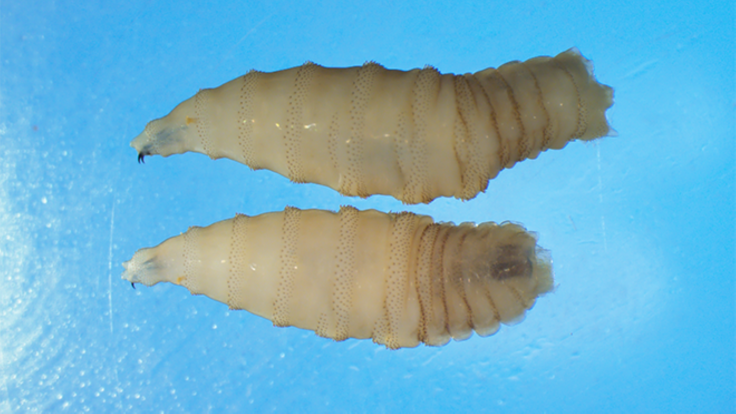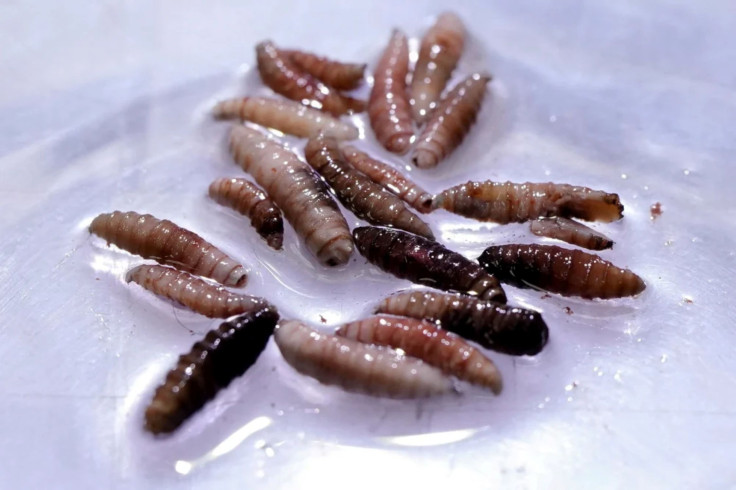'Flesh-Eating Maggots' Back in the US After 60 Years – But Can the Deadly Screwworm Spread Between People?
The first US case of the New World screwworm in nearly 60 years has raised fears—here's what you need to know about how it spreads, its symptoms, and whether humans should really be worried.

'Flesh-eating maggots' may sound like something from a horror movie, but they have just made a shocking comeback in the United States for the first time in nearly 60 years.
Health officials in Maryland, alongside the US Centers for Disease Control and Prevention (CDC), confirmed that a traveller had been infected with the New World screwworm after returning from Central America.
Confusion remains over whether the individual had travelled to El Salvador or Guatemala, but one thing is clear: the parasite is back on American soil.
Panic has spread almost as fast as the news itself, leaving many to ask the same chilling question: is this gruesome maggot infestation contagious?
Is the Flesh-Eating Screwworm Contagious?
The short answer is no.
Unlike flu or COVID-19, screwworm infestations cannot pass directly from person to person or even from animal to animal.
Experts from the Center for Food Security and Public Health explain that the parasite spreads only when female flies lay eggs on open wounds or natural body openings.
In other words, it is always the fly that carries the danger. A sore or cut attracts the insect, which deposits hundreds of eggs.
These hatch into larvae that feed on living tissue, creating the illusion of contagion when multiple hosts in the same area are affected.
How the Flesh-Eating Parasite Invades the Body
According to the CDC, a single female screwworm fly can lay up to 3,000 eggs during her short life. Even the smallest scratch, insect bite, or a newborn's umbilical wound can be enough to attract the parasite.
Within hours, the larvae burrow into the flesh and begin consuming living tissue—unlike ordinary maggots, which feed only on dead matter.
Left untreated, the wound enlarges as more flies are drawn in. In livestock, infestations can cause extreme suffering and even death. In humans, they are rare but potentially life-threatening if not treated quickly.

Symptoms of Flesh-Eating Maggots to Watch Out For
The CDC warns of several tell-tale signs of screwworm infestation:
- Painful or enlarging wounds that fail to heal
- Bleeding or foul-smelling sores
- Visible maggots in open wounds
- A sensation of movement under the skin or inside nasal, oral, or eye cavities
While terrifying, most infestations can be treated successfully if caught early.
Treatment: The Gruelling Process of Removal
Treatment is unpleasant but effective. Every larva must be removed manually, the wound disinfected, and the patient closely monitored for reinfestation. No single medication can eliminate screwworm once it takes hold.
On a wider scale, the US Department of Agriculture relies on the sterile fly programme. By releasing sterilised male flies, they disrupt the breeding cycle and suppress outbreaks.
Agriculture Secretary Brooke Rollins recently announced plans for a new sterile fly facility in Texas—a move that now seems alarmingly well-timed.
A Billion-Dollar Threat to America's Cattle Industry
The screwworm is not only a medical menace—it is also an agricultural disaster. The USDA estimates that an outbreak in Texas alone could cost $1.8 billion in cattle losses, veterinary expenses, and labour.
With America's beef industry already under pressure, confirmation of a human case has rattled ranchers and consumers alike.
Should Americans Be Worried About Screwworm?
'The risk to public health in the United States from this introduction is very low,' Maryland health spokesperson Andrew Nixon told Reuters.
Experts stress that the parasite does not spread casually between people. Prevention relies on proper wound care, sanitation, and avoiding fly exposure in endemic regions.
Still, its reappearance after nearly 60 years is a sobering reminder: globalisation and climate shifts are making it harder than ever to keep old enemies at bay.
© Copyright IBTimes 2025. All rights reserved.




















